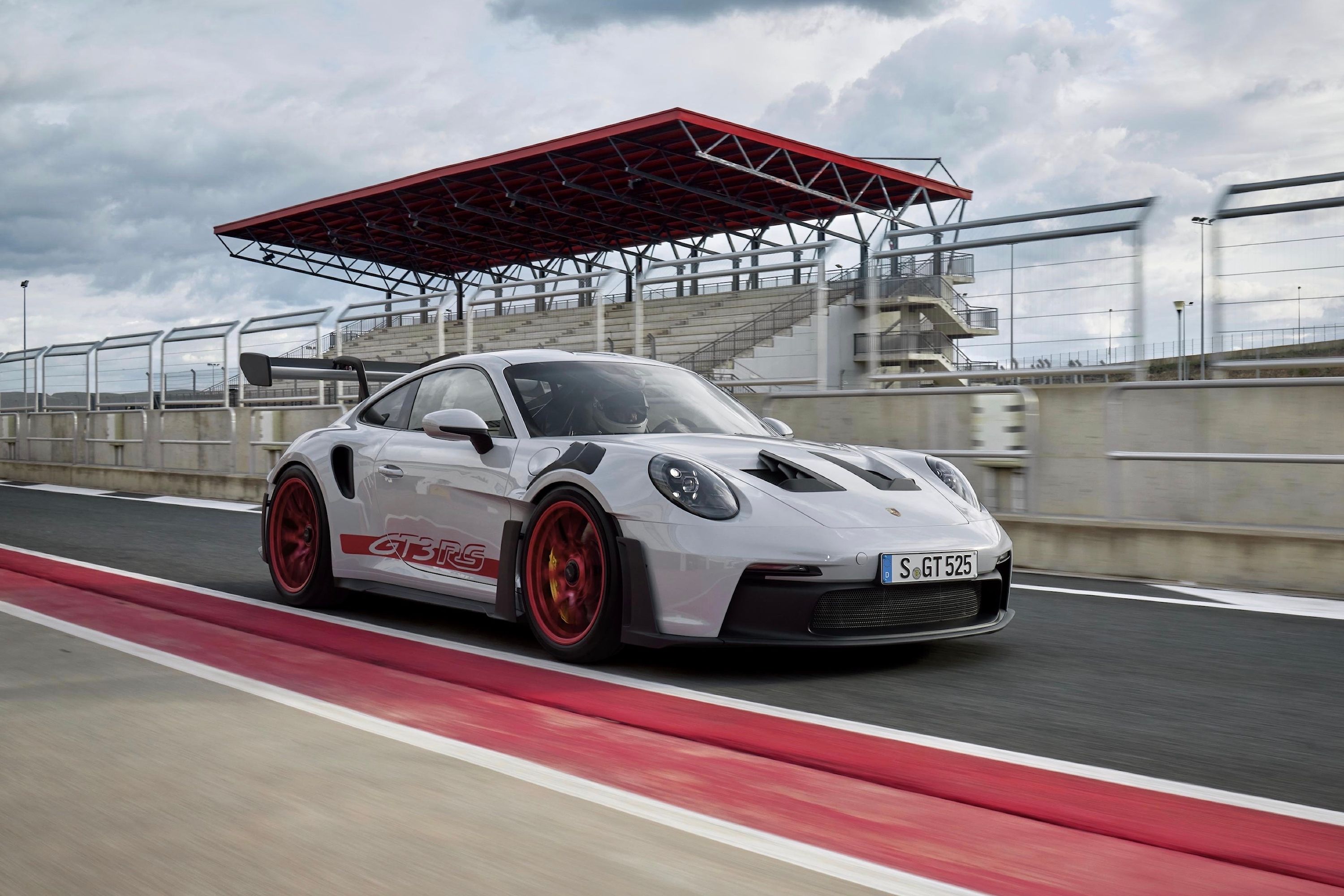
Porsche has developed a new active aero system that can actively change the length of a sports car, turning it from a regular-sized machine into a slippery longtail variant within seconds.
While Porsche's race cars and RS division road cars like the new 911 GT3 RS are known for their extreme aerodynamics, the automaker's latest invention moves beyond movable wings and enters the realm of shapeshifting bodywork. According to a new patent unearthed by CarBuzz at the German Patent and Trademark Office (DPMA), future Porsches could grow and shrink as their aerodynamic requirements change.
Essentially, this new Porsche design allows for a car's entire rear end to extend rearward at speed and then contract when the speed decreases again. It does so with a combination of retractable bodywork beneath an outer skin. That outer skin, depending on its application, either remains fixed with the retractable bodywork sliding in and out or can even be hinged to flare out, creating space for the rear end to protract.
The mechanism illustrated in the patent drawings appears very complicated, but it really just consists of a rear panel and matching rear side panel extensions, along with an actuator to move the entire rear end forward or backward. The actuator is an extendable arm arrangement with sliding plates to cover gaps in the assembly.
But why would Porsche want technology like this?
Aerodynamicists have long understood the advantages of giving a car an elongated shape, and this principle is still being applied to this day with cars such as the McLaren Speedtail and the next generation of super-slippery EVs. The longer the bodywork, the easier it is to control airflow, which naturally adheres to a surface and becomes turbulent only when separation occurs. Longer, tapering bodywork also reduces the chance of large low-pressure zones behind the vehicle, which create a suction effect, reducing performance.
Effectively, this design allows for a smoother routing for the air flowing over the car's body, which reduces drag and increases fuel efficiency, all by making more effective use of the car's bodywork to manipulate airflow. This is the same principle employed in highly efficient EVs like the Mercedes Vision EQXX Concept and the solar-powered Lightyear 0, but these have to make do with long rear overhangs that impede their departure angles over even small bumps.
The Porsche patent would find a middle ground between the benefits and drawbacks, enabling the car to adjust automatically to the circumstances without impacting maneuverability and practicality.
As for where it might be used, we'd love to say that the technology would be perfect for a modern-day interpretation of the Porsche 935, which famously mated a longtail design with a Kammback cut-off to improve its aerodynamic efficiency while racing. However, With Porsche having already given us a modern homage to that car, this new tech is more likely to be applied on an EV like a next-gen Taycan or perhaps even the electric 718 Cayman successor.
